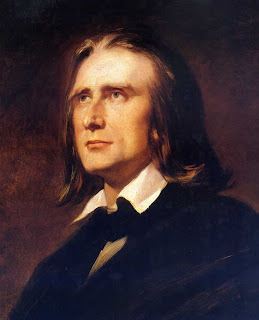Georges Bizet had an outstanding career as a student at the Paris Conservatoire, and was known to be a brilliant pianist, but he seldom played in public. He graduated with honors and won the
Prix de Rome. After spending three years in Italy, Bizet returned to France and found very little interest in his compositions. He earned his living by arranging other composers music until he began to have moderate success writing operas. His last composition was his masterpiece, the opera
Carmen, which he (and some critics) considered a failure.

The
Symphony in C Major was written apparently as an assignment from his teacher
Charles Gounod. Bizet had just turned 17 four days before he began the work in 1855. The symphony follows Gounod's Symphony No. 1 in style if not exactly in content, although there are hints of actual music quotes from Gounod's symphony used by Bizet. Bizet evidently was not keen on having the symphony performed or published, perhaps because the musical life of France at the time was centered around opera with very little instrumental music being performed. After being considered lost for many years, a copy of the symphony was found and first performed in 1935. The symphony is in four movements and is in the style of the classical symphonies of Mozart and Haydn:
I. Allegro vivo - The movement begins with a
fortissimo C major chord and then the strings take up the first theme, a simple tune that is extended and developed as it goes. The first theme plays for a considerable time until the second theme in the solo oboe appears. The first theme returns and leads to the repeat of the exposition. The development begins with a short variant of the first theme followed by the second theme. This pattern of alternating themes lasts throughout the development until the recapitulation arrives. The first theme again dominates, the second theme is played by the flute, and a beginning fragment of the first theme brings about the end of the movement.
II. Adagio - An introduction leads up to the exotic first theme played by the oboe. A second lyrical theme is played by the violins as the pizzicato accompaniment from the lower strings continues. A fragment from the first theme spins into a subject for a fugue in the middle section until the introduction reappears as a lead in for the exotic theme once again played by the oboe. The second theme appears again briefly before the movement slowly ends with a partial repeat of the oboe solo.
III. Scherzo- Allegro vivace - The theme of the scherzo is a variant of the first theme that began the symphony. The trio also contains references to the first theme of the first movement.
IV. Allegro vivace - The finale begins with the first theme that runs through the violins. A second theme is played by the woodwinds. The first theme makes another appearance, and then a third theme is played primarily in the strings with comments from the woodwinds. Transition material leads to the repeat of the exposition. The development section bounces from theme to theme until it arrives at the recapitulation. The same general pattern of themes is followed from the exposition until Bizet winds things up neatly in C major.







